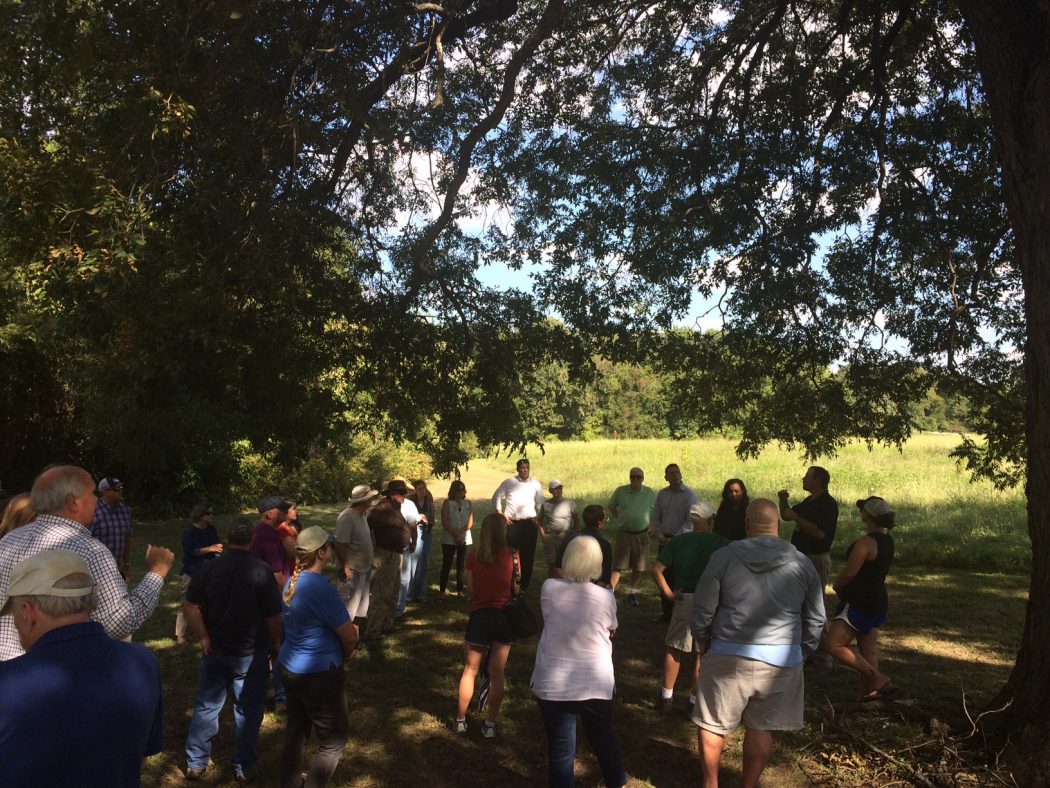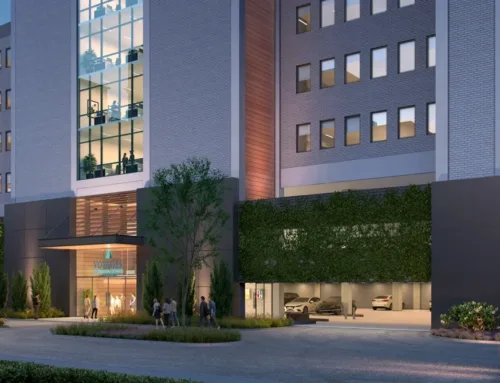
About 30 neighbors and City of Dallas Park Department officials met Thursday afternoon to discuss the removal of several trees from a prairie just south of Lakewood Park on Williamson Road. What started off as an oppositional and heated meeting ended with compromise and a plan to move forward.
Numerous cargo pockets, hiking boots and at least one braided goatee gathered under an expansive pecan tree at Lakewood Park to hear Park Department officials explain why the city was going to remove 18 trees from the prairie. Park staff explained the removal of tress will preserve a more precious resource: Blackland Prairie.
Despite one neighbor storming off while muttering, “Makes me sick” under his breath when he thought the path cut through the prairie would be removed (a path will remain), the meeting was mostly positive and constructive. Park staff, who were joined by District 9 City Councilman Mark Clayton, explained the importance of prairies to the monarch butterfly migration, water absorption and biodiversity. The trees, some of whom were planted by neighbors that live close to the park, don’t belong in a prairie, and interrupt the restoration of the natural environment.
“We all love trees,” Clayton said. “There is that balance between trees and prairie, and I think it’s going to be beautiful.”
According to Dallas’ Urban Biologist Brett Johnson, Blackland Prairie has gone from 15 million acres to around 5 thousand acres due to human impact. The city has worked hard to restore the prairie around the lake, where 160 acres of the rare prairie still exist. Though the area near Lakewood Park was rated as a poor example due to foreign plant species, he hopes that can change within three to five years.
“These prairies are our old ancestors, and they are more valuable than when we populate them with trees, for pollinators and carbon absorption,” said Lee Ann Ellis of the Native Prairies Association of Texas. “We can’t afford to lose more prairie remnants.”
In nature, these prairies would have burned every three to 10 years, preventing most trees from maturing. The Park Department plans to leave eight trees in the prairie whose trunks are at least 6-inches in diameter, though Johnson said he was amenable to going down to 4-inches, which would allow four more trees to remain.
Johnson stressed the need for these prairies to be adopted by neighborhood groups, which in other areas have actually walked through the prairies to remove invasive species, such as Queen Anne’s Lace. Groups have also done a “Bioblitz,” where they document all the plant and animal species they can find in a given area to raise awareness of the benefits of the prairie. This Lakewood Park prairie hasn’t been adopted or had a Bioblitz.
The meeting ended with Shana Hamilton of the Park Department agreeing to set another meeting time within 60 days to further discuss the plan with the neighborhoods, and perhaps allow neighbors who planted trees in the prairie to dig them up and replant them elsewhere.
“We want consensus from all the groups,” Hamilton said.





